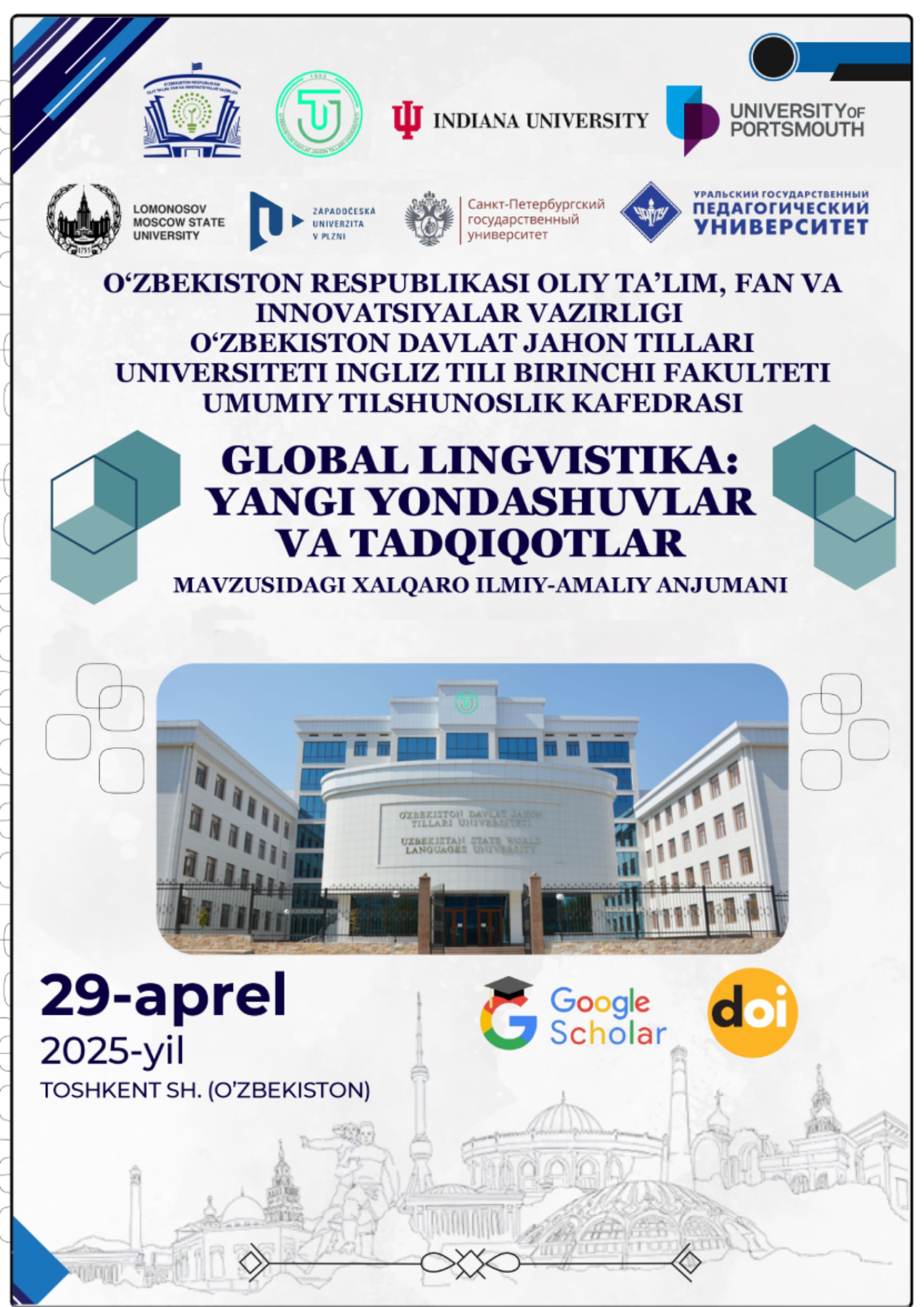CULTURAL DIFFERENCES AFFECTING ENGLISH-KARAKALPAK TRANSLATION
Kalit so‘zlar
English-Karakalpak translation, cultural differences, linguistic structure, idiomatic language, politeness expressions, social norms, adaptation, localization, cultural sensitivity, translation strategies, language barriers.Annotasiya
This article explores the significant impact of cultural differences on the translation process between English and Karakalpak. Given the increasing importance of cross-cultural communication in a globalized world, understanding how cultural nuances influence translation is crucial for achieving accurate and meaningful interpretations. Through a qualitative analysis of various literary texts, this research identifies key cultural disparities, including linguistic variations, social norms, and historical contexts that shape the translation landscape. The findings reveal that translators often encounter challenges related to idiomatic expressions, contextual meanings, and cultural references that do not have direct equivalents in the target language.
Foydalanilgan adabiyotlar ro‘yhati
Boltayevna, I. L., Nabiyevna, N. Z., & Ixtiyorovna, M. (2020). The similarities and differences of proverbs with other genres. International Journal of Psychosocial Rehabilitation, 24(06).
Ibrahim, M. A. E., & Mansor, A. M. A. (2017). Factors influencing the quality of translation. International Journal of Advanced Educational Research, 2(5), 169-172.
Kohdtkam, P. (2022). Linguistic and Cultural Differences Influencing Thai to English Translation: On the Qualitative Data Suggesting Techniques Employed by Third Year Students, Ubon Ratchathani Rajabhat University, Thailand. Middle East Journal of TEFL, 2(2), 6-23.
Nida, E. A. (1958). Analysis of meaning and dictionary making. International Journal of American Linguistics, 24(4), 279-292.
Tolibaeva, A. (2023). COMPARATIVE STUDY OF TERMS RELATED TO TRADITION IN ENGLISH, UZBEK AND KARAKALPAK LANGUAGES. Центральноазиатский журнал образования и инноваций, 2(6), 164-167.
Tomaszczyk, J. (1984). The culture-bound element in bilingual dictionaries. LEXeter, 83, 289-297.
Venuti, L. (2012). Translation changes everything: Theory and practice. Routledge.
Джумамуратов, К. (2023). Phraseological units with a colorative component as a fragment of the linguistic picture of the world (based on the material of russian, english and karakalpak languages). Ренессанс в парадигме новаций образования и технологий в XXI веке, 1(1), 135-138.

